What's The Healthiest Frying and Cooking Oil?
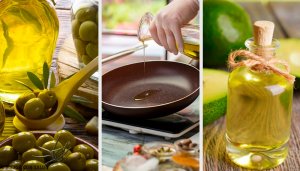

Written and verified by the nutritionist Eliana Delgado Villanueva
Frying food has always been popular and many traditional recipes call for using oil. Fried foods are also a basic element in the fast-food industry. Unfortunately, people often don’t use the healthiest oil for frying their food.
How frying works
Deep-frying consists of submerging food into the hot oil. The ideal temperature for frying is around 350-375 °F. When you submerge food into oil at this temperature, its surface cooks almost instantly and forms a sort of “seal” that the oil can’t penetrate.
At the same time, the humidity inside the foods converts into steam, thus, cooking the food from the inside. The steam actually helps keep the oil out of the food.
If the temperature of the oil is too low, however, the oil will pass through into the food, making it oily. On the other hand, if the temperature is too high, it can dry food out and oxidize the oil. You can read more about this process in this study by Dr. Christian Gertz. Some oils can withstand much higher temperatures than others.
The fats in oils
The higher the saturated fat content in oil, the more stable it is when it heats up. This is why saturated and monounsaturated oils are the best for frying. It’s also why we should avoid oils that have a high polyunsaturated fat content.
The latter type of oil isn’t the healthiest for frying because, according to research conducted by the Royal London Hospital’s School of Medicine, it can cause negative health effects.
The study argues that polyunsaturated fats contain two (or more) double bonds in their chemical structure. These double bonds normally react with oxygen and form harmful components when exposed to high temperatures.
Taste, of course, also matters here. Generally, when people deep-fry foods, they prefer more neutral-tasting oils.
The healthiest cooking oil
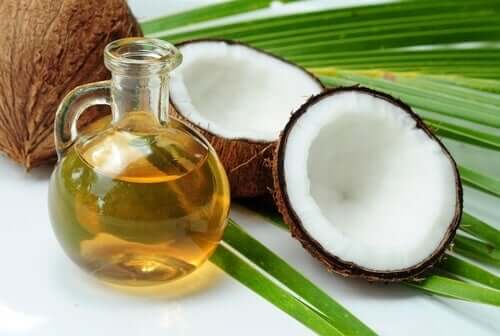
Coconut oil tends to be the healthiest oil for frying. As supported by research conducted by Dr. Yashi Srivastava, even after 8 hours of continuous frying at 365 °F, its quality doesn’t deteriorate. More than 90% of the fatty acids in coconut oil are saturated, making it very resistant to high temperatures.
Saturated fats have a bad reputation for being unhealthy, but new studies, like this study conducted by McMaster University (Canada), show that they’re a completely harmless energy source for humans.
In addition, coconut oil has numerous health benefits. For example, it can help kill harmful bacteria and viruses. In fact, coinciding with a study carried out by the Universidade Federal de Alagoas (Brazil), coconut oil can even help you lose abdominal fat.
Keep in mind that some varieties can give off a coconut flavor or aroma, which is why you should try out different brands in order to find the one that you prefer.
Other options for frying
Animal fats
Animal fats also make for excellent frying options. They include fats such as lard, suet, and pan drippings. They have great flavor and provide a crispy texture.
Most of the fatty acids in animal fats are saturated and monounsaturated, which makes them very resistant to high temperatures. However, according to a study conducted by California State University, their fatty acid content can vary depending on the animal’s diet.
Unlike animals raised in pastures or fields, grain-fed animals might contain many more polyunsaturated fatty acids in their fat reserves.
In light of that, we should only consider the fat of naturally-fed animals as a healthy option for frying. You can buy lard in a store or save meat drippings to use them later.
Olive oil
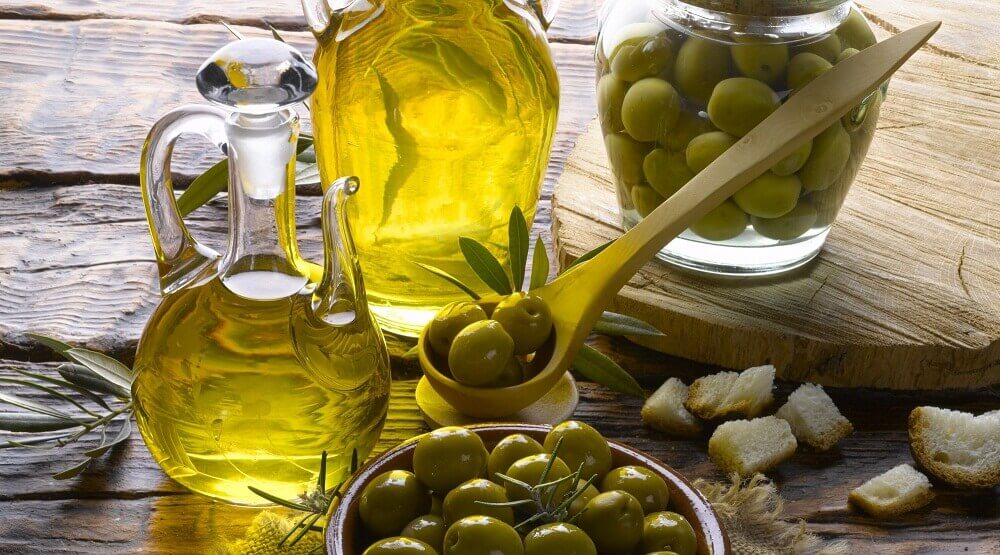
Olive oil is one of the healthiest fats in the world. It has high amounts of monounsaturated fatty acids, which only have one double link. As the case of saturated fats, monounsaturated fats are highly resistant to heat.
According to a study conducted by the Universidade do Porto (Portugal), you can use olive oil in a fryer for more than 24 hours before it oxidizes. In theory, this makes it a wonderful option for frying. However, its flavor and fragrance might not hold well when it faces long periods of high heat.
Avocado oil
The composition of avocado oil is similar to that of olive oil. While it mainly has monounsaturated fats, it also has some saturated and polyunsaturated fats mixed in, too. It has a considerably high smoking point (520 °F) and a delicate walnut flavor.
Peanut oil
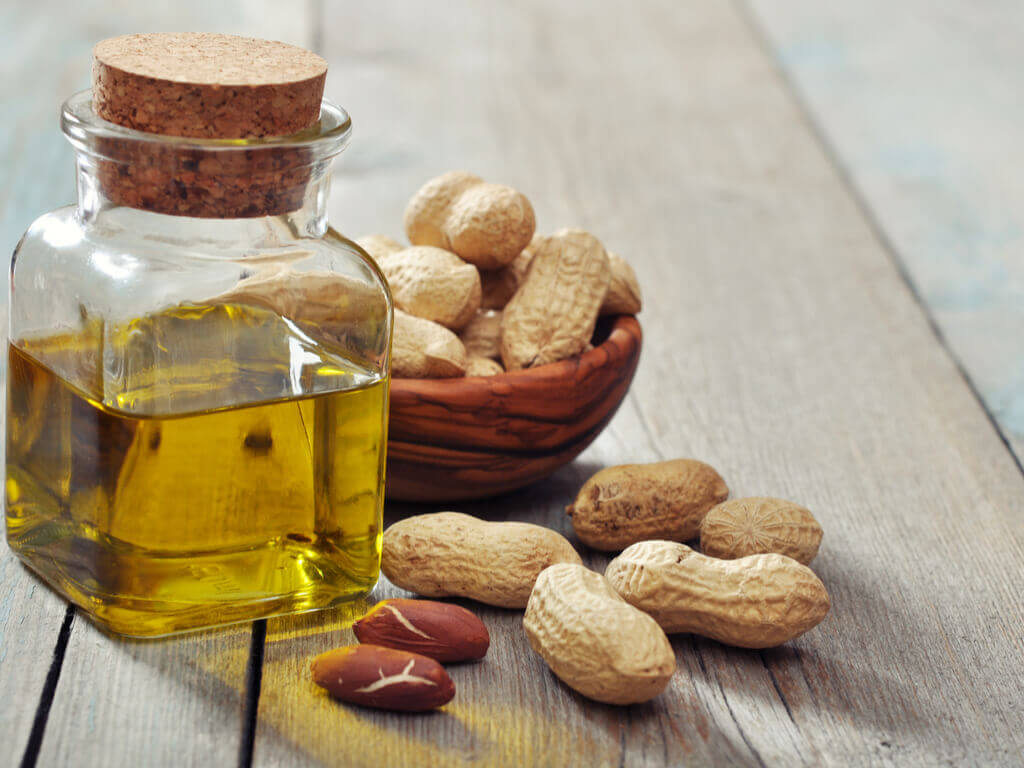
Peanut oil has a high smoking point that’s around 446 °F (230 °C). It’s very popular for deep frying because of its natural flavor. In addition, it doesn’t absorb the flavor of the foods which gives one use many opportunities for frying different foods, as highlighted by this study conducted by Ohio State University (United States).
However, looking from a health standpoint, peanut oil isn’t the best option. According to this study conducted by the Central Food Technological Research Institute, its polyunsaturated content is considerably high (approximately 32%), which also makes it vulnerable to high temperatures.
We recommend that you read: Seven Reasons Why You Should Eat More Nuts
Palm oil
This oil mainly contains saturated and monounsaturated fats, which makes it a great option for frying. People say that the flavor of palm oil is rather neutral, especially the unrefined variety known as red palm oil. However, there are serious concerns about the sustainability of harvesting palm oil.
Fats and oils you shouldn’t use for frying
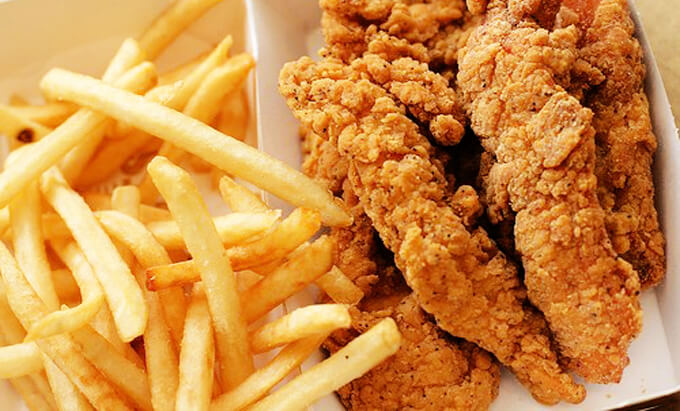
There are several fats and oils that you should avoid using at all costs. These include industrial vegetable oils. These oils are derived from seeds and undergo aggressive processing methods. A study carried out by the University of Florida shows that they are high in polyunsaturated fats and up to 4% of those fats are toxic trans fats.
Not only that, but a study conducted by the Kasturba Medical College argues that using these kinds of oil for frying, might result in large quantities of oxidized fatty acids and harmful compounds. Avoid them like the plague.
In conclusion, using the wrong kinds of oils for frying is terrible for health. However, using the right kinds of oils, you can enjoy a fried treat from time to time (homemade being the best option), guilt-free.
All cited sources were thoroughly reviewed by our team to ensure their quality, reliability, currency, and validity. The bibliography of this article was considered reliable and of academic or scientific accuracy.
- Gertz, C., Aladedunye, F., & Matthäus, B. (2014). Oxidation and structural decomposition of fats and oils at elevated temperatures. European Journal of Lipid Science and Technology, 116(11), 1457–1466. https://doi.org/10.1002/ejlt.201400099
- GROOTVELD, M., SILWOOD, C. J. L., ADDIS, P., CLAXSON, A., SERRA, B. B., & VIANA, M. (2001). HEALTH EFFECTS OF OXIDIZED HEATED OILS1. Foodservice Research International, 13(1), 41–55. https://doi.org/10.1111/j.1745-4506.2001.tb00028.x
- Henna Lu, F. S., & Tan, P. P. (2009). A comparative study of storage stability in virgin coconut oil and extra virgin olive oil upon thermal treatment. International Food Research Journal, 16(3), 343–354.
- Srivastava, Y., & Semwal, A. D. (2013). A study on monitoring of frying performance and oxidative stability of virgin coconut oil (VCO) during continuous/prolonged deep fat frying process using chemical and FTIR spectroscopy. Journal of Food Science and Technology, 52(2), 984–991. https://doi.org/10.1007/s13197-013-1078-8
- Dehghan, M., Mente, A., Zhang, X., Swaminathan, S., Li, W., Mohan, V., … Mapanga, R. (2017). Associations of fats and carbohydrate intake with cardiovascular disease and mortality in 18 countries from five continents (PURE): a prospective cohort study. The Lancet. https://doi.org/10.1016/S0140-6736(17)32252-3
- Assunção, M. L., Ferreira, H. S., Dos Santos, A. F., Cabral, C. R., & Florêncio, T. M. M. T. (2009). Effects of dietary coconut oil on the biochemical and anthropometric profiles of women presenting abdominal obesity. Lipids, 44(7), 593–601. https://doi.org/10.1007/s11745-009-3306-6
-
Casal, S., Malheiro, R., Sendas, A., Oliveira, B. P. P., & Pereira, J. A. (2010). Olive oil stability under deep-frying conditions. Food and Chemical Toxicology, 48(10), 2972–2979. https://doi.org/10.1016/j.fct.2010.07.036
- Das AK, Babylatha R, Pavithra AS, Khatoon S. Thermal degradation of groundnut oil during continuous and intermittent frying. J Food Sci Technol. 2013;50(6):1186–1192. doi:10.1007/s13197-011-0452-7
- Malhotra, A., Redberg, R. F., & Meier, P. (2017). Saturated fat does not clog the arteries: Coronary heart disease is a chronic inflammatory condition, the risk of which can be effectively reduced from healthy lifestyle interventions. British Journal of Sports Medicine. https://doi.org/10.1136/bjsports-2016-097285
- O’KEEFE, S., GASKINS‐WRIGHT, S., WILEY, V., & CHEN, I. ‐CHEN. (1994). LEVELS OF TRANS GEOMETRICAL ISOMERS OF ESSENTIAL FATTY ACIDS IN SOME UNHYDROGENATED U. S. VEGETABLE OILS. Journal of Food Lipids, 1(3), 165–176. https://doi.org/10.1111/j.1745-4522.1994.tb00244.x
- Prabhu, H. R. (2000). Lipid peroxidation in culinary oils subjected to thermal stress. Indian Journal of Clinical Biochemistry, 15(1), 1–5. https://doi.org/10.1007/BF02873539
This text is provided for informational purposes only and does not replace consultation with a professional. If in doubt, consult your specialist.








